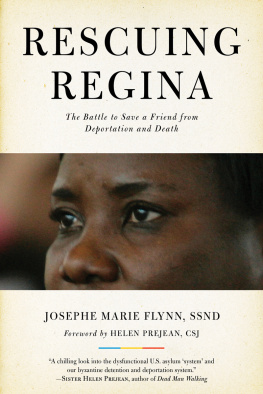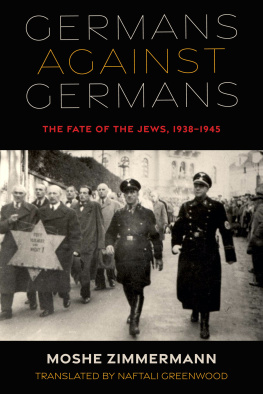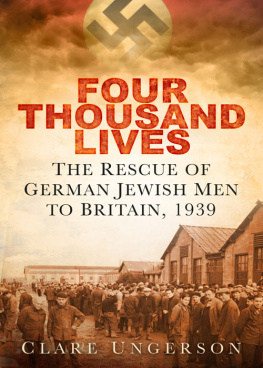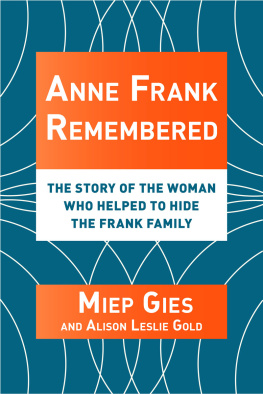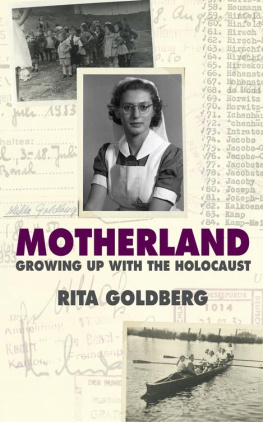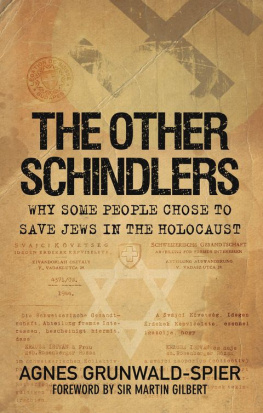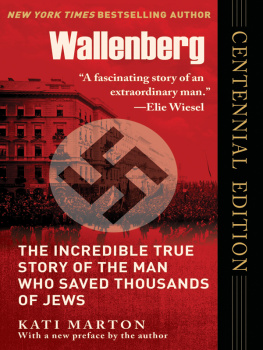PRAISE FOR SHEDDING OUR STARS

Thanks to Ursula LeGuin, I came aboard this powerful vessel: an inspirational story, largely unknown, of the Jews of Holland, the incredible role of the young German official Hans Calmeyer, and the many thousands of lives he saved. Stories of Anne Franks family, and Laureen and Rudi Nussbaums own stories. Even a story of my own family. Of all our families. I was in tears again and again.
DR. TONY WOLK, Professor of English, Portland State University, and author of The Parable of You and the Lincoln Out of Time trilogy
What is the price of integrity? In occupied Holland, the German bureaucrat Hans Calmeyer (19031972) saved at least 3,700 Jewish lives and protected 9,000 more in mixed marriages. After 1945, some Germans saw him as a traitor, or self-serving. Laureen Nussbaum, who grew up with Anne and Margot Frank, was among the lucky ones able to remove the yellow star thanks to Calmeyer. Nussbaums account proves we need eye-witness testimony to take heed of the past and its legacy in the present.
DR. PENNY MILBOUER, translator of Between Persecution and Participation: Biography of a Bookkeeper at J. A. Topf & Shne
This is an inspiring story of quiet resistance from a German lawyer, Hans Calmeyer, who, while playing his role as a loyal German in the dejudification of the Netherlands, maintained a rescue operation that saved thousands of Jewish lives, more than Schindler. Among them was Laureen Nussbaum, whose account in this remarkable biography/autobiography is like that of Anne Frank, her friend, in rendering the feel and texture of living in Amsterdam during the war. Gripping and revelatory.
DR. GAYLE GREENE, author of The Woman Who Knew Too Much: Alice Stewart and the Secrets of Radiation and Missing Persons: A Memoir
This intertwined family memoir and Calmeyer biography gives a unique take on a familiar story. It reads like a novel, showing how two peoplea fourteen-year-old girl who was helping her boyfriend in hiding, and a German bureaucrat who was saving lives under constant scrutinymanaged to resist the Nazis. Youll see the world of Nazi-occupied Amsterdam in more intimate detail than ever beforeand unlike a novel, youll see what happens to the author and Calmeyer after the war years were over. We need this book now, for its example of two people of unimpeachable integrity in the worst of times, and for its warning.
MARY DINGEE FILLMORE, author of An Address in Amsterdam
SHEDDING OUR STARS

Copyright 2019 by Laureen Nussbaum
All rights reserved. No part of this publication may be reproduced, distributed,
or transmitted in any form or by any means, including photocopying, recording,
digital scanning, or other electronic or mechanical methods, without the
prior written permission of the publisher, except in the case of brief quotations
embodied in critical reviews and certain other noncommercial uses permitted
by copyright law. For permission requests, please address She Writes Press.
Published October 2019
Printed in the United States of America
Print ISBN: 978-1-63152-636-7
E-ISBN: 978-1-63152-637-4
Library of Congress Control Number: 2019940523
For information, address:
She Writes Press
1569 Solano Ave #546
Berkeley, CA 94707
Interior design by Tabitha Lahr
She Writes Press is a division of SparkPoint Studio, LLC.
Unless otherwise noted, all translations from the German and the Dutch are by
Laureen Nussbaum, and all illustrations, except otherwise stated, are her property.
Dedicated to the memory of Calmeyers biographer, Peter Niebaum, and to those born after us, especially to Hans Calmeyers offspring: Micah Victoria, Alexander Hannes, and Nicholas Albrecht Hentschel, the children of his son Michael Calmeyer Hentschel.
For a person who was Aryanized, the gate to life opened.
BENNO STOKVIS, 1961, Dutch lawyer in the occupation years

Too little, too little!
HANS CALMEYER, 1965, letter to Dr. J. Presser
CONTENTS

INTRODUCTION BY TED KOPPEL

I have always been vaguely familiar with the theory of six degrees of separationthe notion that each of us is somehow connected, however tenuously, with any other person on the planet through a chain of no more than five intermediaries. It is easily demonstrable when the first link in the chain has been a journalist for more than fifty years. Having met Nelson Mandela, Mikhail Gorbachev, Ronald Reagan, among several thousand other newsmakers, my connection to the millions, the hundreds of millions who swirled in and out of their collective orbits, is only a single point of separation away. Multiplied four more times by successive layers of intermediaries and arithmetic does the rest. Unaware as we may be, we are, at least mathematically speaking, demonstrably connected to one another. It is a small world.
Curiously, I need no such device to link me to the hero of this book, although his name and, indeed, his very existence, were unknown to me until Laureen Nussbaum asked me to write this introduction. Laureens mother, Marianne, and mine, Alice, were close friends as young German women in Frankfurt/Main between the two world wars. They remained so throughout the turbulent decades that followed. It is difficult to imagine now, in the knowledge of what was to come, but the sense of identity that characterized these two young women centered more on their nationality than their religion. The fact that Marianne was raised a Christian and Alice was Jewish had no more impact on their friendship during the years of the Weimar Republic in Germany than a similar relationship would experience these days in the United States. Indeed, Marianne soon married a Jew, Joseph Klein.
To a much greater degree than their eastern European co-religionists, German Jews were assimilated. My father, Erwin Koppel, served four years in the German army during the First World War. In light of all that would ultimately transpire under the Nazis, it now seems relatively trivial, but many years later my father would recall how shattered he was to find that he had been declared stateless. He had always been, he believed, a totally committed German. Germanys Jews during the Weimar Republic were, they believed, inextricably woven into the fabric of their nations culture and society. Walther Rathenau served as Germanys first Jewish foreign minister almost fifty years before Henry Kissinger earned a similar distinction as the U.S. Secretary of State. Recalling my fathers sense of nationalism, I can only imagine the growing sense of despair that ultimately convinced him to flee Germany and move to England in 1937. He and my mother, Alice Neu, had been keeping company (in the delicate euphemism of those times) for a number of years but did not marry until well after she joined him in Lancashire, England, in 1938. Marianne Klein visited them there in August 1939, half a year before I was born.
The Kleins and their three daughters had taken refuge in Holland several years earlier. The Kleins and the Koppels would not see one another again until July 1948, at which time the author of this book, Laureen Nussbaum, was still known by the diminutive of her given German name, HanneloreHansi. As a pre-pubescent at the time, I was only vaguely aware of the circumstances that threw Hansi and the dark, somewhat brooding, Rudi Nussbaum together. I knew that Rudi had been given shelter by the Kleins during the Nazi occupation of Holland. I never quite understood how it was that the Kleins were in a position to give anyone shelter. Hansis father, Joseph, after all, was himself a Jew. The three girls, under the principles of Aryan purity that governed life in Germany, would surely also have been considered Jews, their Christian grandmother notwithstanding. Rudis survival of the war and ultimately his marriage to Hansi seemed simply a happier version of the far better-known story of Anne Frank, whose diary and ultimate death in a Nazi concentration camp have become the universal chronicle of the Holocaust, writ small.


